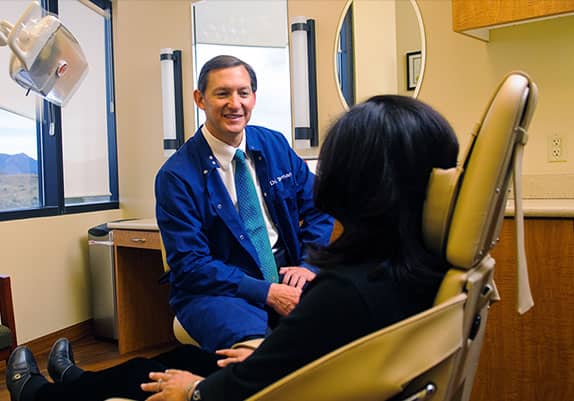Corrective Jaw Surgery
Jaw surgery is essentially the surgical correction of facial skeletal imbalance.
This imbalance can result from facial growth abnormalities, trauma or congenital disorders such as cleft lip and palate. This imbalance results in difficulty in eating, premature tooth wear, and loss, temporomandibular joint or facial muscle dysfunction, and pain along with abnormal facial appearance. Jaw surgery usually starts with pre-surgical orthodontics to correctly align the teeth so the Oral and Maxillofacial Surgeon is able to move the facial bones to their ideal position. There is usually a short course of post-operative orthodontics to fine-tune the occlusion (bite).
Jaw surgery not only involves proper positioning of the facial bones but may also involve the placement of implants, liposuction, or other adjuvant treatment to optimize the treatment outcome. Dr. Thoman has been performing orthognathic surgery since 1988. He has always been careful to work in a collaborative fashion with the patient, general dentist, and orthodontist to make sure that all concerns are addressed. This collaboration along with careful attention to detail in the surgery helps assure the best outcome possible for each individual patient.
Who needs corrective jaw surgery?
In some cases, your upper and lower jaws may have grown at different rates. Injuries and birth defects may also affect jaw alignment. Though orthodontics can usually correct problems when only the teeth are misaligned, corrective jaw surgery with an oral surgeon may be necessary to correct misalignment of the jaws.
If you suffer from any of the following conditions, you may be an excellent candidate for corrective jaw surgery:
- Difficulty chewing, biting food, or swallowing
- Chronic jaw or jaw joint (TMJ) pain and headache
- Excessive wear of the teeth
- Open bite (space between the upper and lower teeth when the mouth is closed)
- Unbalanced facial appearance from the front or side
- Facial injury or birth defects
- Receding chin
- Protruding jaw
- Inability to make the lips meet without straining
- Chronic mouth breathing and dry mouth
- Sleep apnea (breathing problems during sleep, including snoring)
Receiving treatment to correct any of the above conditions is a commitment not only to your health, but to your happiness as well. Treatment may include surgery and orthodontic treatment, and may take several years to complete, but the results will last a lifetime.
Utilizing VSP (Virtual Surgical Planning)
VSP (Virtual Surgical Planning) technology provides our team with a clear three-dimensional understanding of our patient’s anatomy to develop a strategy prior to entering the operating room. In addition, patient-specific sterilizable surgical guides, models, and instruments are produced for use during surgery. Not only does VSP reduce the time that a patient spends under anesthesia it also improves surgical outcomes.
How does VSP work?
Beginning with a patient’s CT scan, a team of biomedical engineers take the data and bring it into a three-dimensional environment. Next, your surgeon and a biomedical engineer participate in a web meeting where they review the data in a 3D environment and determine the surgical plan. Based on the web meeting, patient-specific guides are designed, manufactured, and sent for sterilization and use during surgery. To learn more about VSP please visit www.3dsystems.com/healthcare.





